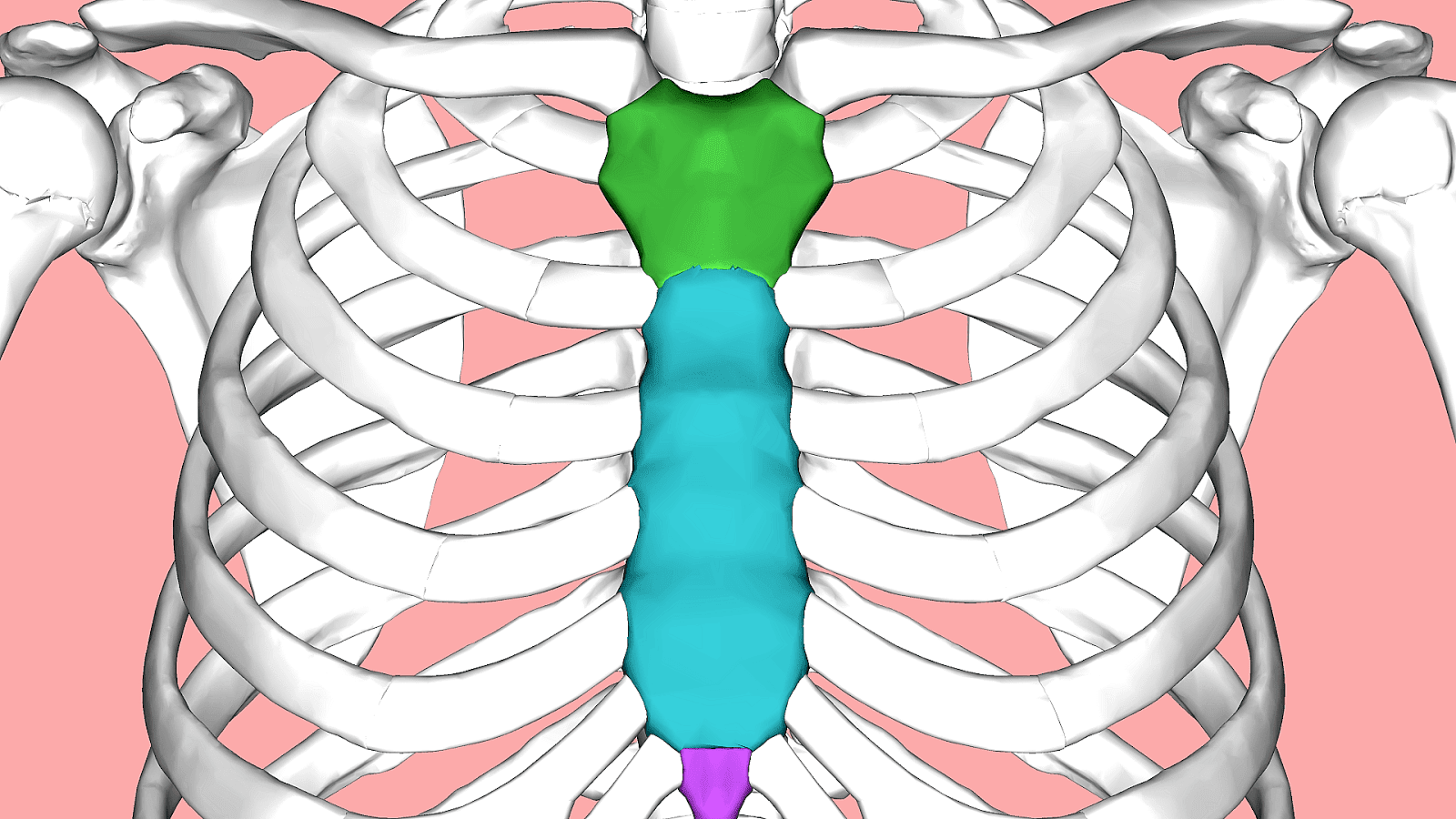Rib and breastbone pain. Costochondritis: Symptoms, Causes, and Treatment
What are the symptoms of costochondritis? What causes costochondritis? How is costochondritis diagnosed and treated? Find the answers to these questions and more in this comprehensive article.
Understanding Costochondritis
Costochondritis is an inflammation of the cartilage that connects the ribs to the breastbone (sternum). This condition can cause significant pain and discomfort, often resembling symptoms of a heart attack or other heart-related conditions. Costochondritis is sometimes known as chest wall pain syndrome, costosternal syndrome, or costosternal chondrodynia.
Symptoms of Costochondritis
The pain associated with costochondritis usually has the following characteristics:
- Occurs on the left side of the breastbone
- Is sharp, aching, or pressure-like in nature
- Affects more than one rib
- Can radiate to the arms and shoulders
- Worsens when taking a deep breath, coughing, sneezing, or with any chest wall movement
Causes of Costochondritis
The exact cause of costochondritis is often unclear. However, it may be associated with the following factors:

- Trauma or injury to the chest wall
- Illness or physical strain, such as severe coughing
- Unknown or idiopathic causes
Costochondritis is more common in women over the age of 40, while a related condition called Tietze syndrome is more common in teenagers and young adults, affecting men and women equally.
Diagnosing Costochondritis
Diagnosing costochondritis can be challenging, as the pain associated with the condition can be similar to that of heart disease, lung disease, gastrointestinal problems, and osteoarthritis. During the physical examination, a healthcare provider will feel along the breastbone for tenderness or swelling, and may move the rib cage or arms to try to trigger the symptoms. While there is no definitive laboratory or imaging test to confirm a diagnosis of costochondritis, the provider may order tests such as an electrocardiogram and chest X-ray to rule out other conditions.
Treatment Options for Costochondritis
Costochondritis usually resolves on its own over time, although the process can take several weeks or longer. The primary focus of treatment is on managing the pain and discomfort associated with the condition. Some common treatment options include:

- Medications: Nonsteroidal anti-inflammatory drugs (NSAIDs), narcotic pain relievers, antidepressants, and anti-seizure drugs may be prescribed to help control the pain.
- Therapies: Physical therapy treatments, such as stretching exercises and transcutaneous electrical nerve stimulation (TENS), can be helpful in managing the symptoms.
- Injections: In some cases, a healthcare provider may inject numbing medication and a corticosteroid directly into the painful joint if conservative measures are not effective.
- Lifestyle and home remedies: Over-the-counter pain relievers, topical pain relievers, heat or ice applications, and rest can also provide relief for some individuals with costochondritis.
When to Seek Medical Attention
It’s important to seek immediate medical attention for any chest pain, as it may be a sign of a life-threatening condition such as a heart attack. If the pain is determined to be due to costochondritis, a healthcare provider can help develop an appropriate treatment plan to manage the symptoms and monitor the condition.

Preparing for a Doctor’s Appointment
When making an appointment for chest pain or suspected costochondritis, it’s helpful to have the following information ready:
- A list of your symptoms, including when they began and any activities that may trigger or worsen the pain
- Details about any relevant medical history, including other conditions you have and any recent injuries to the chest or ribs
- A list of all medications, vitamins, and supplements you are currently taking, including the dosages
- Any questions or concerns you have about your condition and the potential treatment options
Having a friend or family member accompany you to the appointment can also be helpful, as they can assist in remembering the information provided by the healthcare provider.
Costochondritis | Beacon Health System
Overview
Costochondritis (kos-toe-kon-DRY-tis) is an inflammation of the cartilage that connects a rib to the breastbone (sternum). Pain caused by costochondritis might mimic that of a heart attack or other heart conditions.
Costochondritis is sometimes known as chest wall pain syndrome, costosternal syndrome or costosternal chondrodynia. Sometimes, swelling accompanies the pain (Tietze syndrome).
What causes costochondritis is unclear. Treatment focuses on easing the pain while waiting for the condition to improve on its own, which can take several weeks or more.
Symptoms
The pain associated with costochondritis usually:
- Occurs on the left side of your breastbone
- Is sharp, aching or pressure-like
- Affects more than one rib
- Can radiate to arms and shoulders
- Worsens when taking a deep breath, coughing, sneezing or with any chest wall movement
When to see a doctor
For chest pain, seek emergency medical attention to rule out life-threatening causes such as a heart attack.
Causes
Costochondritis usually has no clear cause. However, costochondritis might be associated with trauma, illness or physical strain, such as severe coughing.
Risk factors
Costochondritis occurs most often in women older than 40.
Tietze syndrome usually occurs in teenagers and young adults, and with equal frequency in men and women.
Diagnosis
During the physical exam, a health care provider will feel along your breastbone for tenderness or swelling. The provider might also move your rib cage or your arms in certain ways to try to trigger symptoms.
The pain of costochondritis can be similar to the pain associated with heart disease, lung disease, gastrointestinal problems and osteoarthritis. There is no laboratory or imaging test to confirm a diagnosis of costochondritis. But a health care provider might order certain tests, such as an electrocardiogram and chest X-ray, to rule out other conditions.
Treatment
Costochondritis usually goes away on its own, although it might last for several weeks or longer. Treatment focuses on pain relief.
Treatment focuses on pain relief.
Medications
Your health care provider might recommend:
- Nonsteroidal anti-inflammatory drugs. You can buy some types of these drugs, such as ibuprofen (Advil, Motrin IB, others) or naproxen sodium (Aleve, others), over the counter. Stronger versions are available by prescription. Side effects can include damage to the stomach lining and kidneys.
- Narcotics. If pain is severe, a provider might prescribe a narcotic medication such as tramadol (Ultram). Narcotics can be habit-forming.
- Antidepressants. Tricyclic antidepressants, such as amitriptyline, are often used to control chronic pain — especially if the pain interferes with sleep.
- Anti-seizure drugs. The epilepsy medication gabapentin (Gralise, Neurontin) has also proved successful in controlling chronic pain.
Therapies
Physical therapy treatments might include:
- Stretching exercises.
 Gentle stretching exercises for the chest muscles might be helpful.
Gentle stretching exercises for the chest muscles might be helpful. - Nerve stimulation. In a procedure called transcutaneous electrical nerve stimulation (TENS), a device sends a weak electrical current via adhesive patches on the skin near the area of pain. The current might interrupt or mask pain signals, preventing them from reaching the brain.
Surgery or other procedures
If conservative measures don’t work, another option is to inject numbing medication and a corticosteroid directly into the painful joint.
Lifestyle and home remedies
It can be frustrating to know that there’s little to do to treat costochondritis. But self-care measures, such as the following, might help.
- Nonprescription pain relievers. Acetaminophen (Tylenol, others) ibuprofen (Advil, Motrin IB, others) or naproxen sodium (Aleve, others) may be helpful.
- Topical pain relievers. These include creams, gels, patches and sprays.
 They may contain nonsteroidal anti-inflammatory drugs or numbing medications. Some varieties contain capsaicin, the substance that makes hot peppers spicy.
They may contain nonsteroidal anti-inflammatory drugs or numbing medications. Some varieties contain capsaicin, the substance that makes hot peppers spicy. - Heat or ice. Try placing hot compresses or a heating pad on the painful area several times a day. Keep the heat on a low setting. Ice also might be helpful.
- Rest. Avoid or modify activities that might worsen pain.
Preparing for an appointment
You may be referred to a doctor who specializes in disorders of the joints (rheumatologist).
What you can do
Ask a relative or friend to accompany you, to help you remember what the provider says.
Make a list of:
- Symptoms, including any that may seem unrelated to the reason for the appointment, and when they began
- Key medical information, including other conditions you have and any injury to the painful joint
- Key personal information, including major life changes or stressors
- All medications, vitamins and supplements, including doses
- Questions to ask the health care provider
Questions to ask your doctor
- What’s the most likely cause of my symptoms?
- What tests do I need?
- What self-care steps are likely to help?
- Do I need to restrict activities?
- What new signs or symptoms should I watch for?
- When can I expect my symptoms to resolve?
- I have other health conditions.
 How can I best manage them together?
How can I best manage them together?
Don’t hesitate to ask other questions.
What to expect from your doctor
Your health care provider is likely to ask you a number of questions, including:
- Have your symptoms worsened over time?
- Where is your pain?
- Does exercise or physical exertion make your symptoms worse?
- Does anything else make your pain worse or better?
- Are you having difficulty breathing?
- Have you had recent respiratory infections or injuries to your chest?
- Are you aware of a history of heart problems in your family?
Last Updated: May 11th, 2022
© 1998-2023 Mayo Foundation for Medical Education and Research (MFMER). All rights reserved.
Terms of Use
Costochondritis | nidirect
Costochondritis is inflammation (swelling) of the cartilage joints, at the end of the cartilages that connect your ribs to your breastbone (sternum).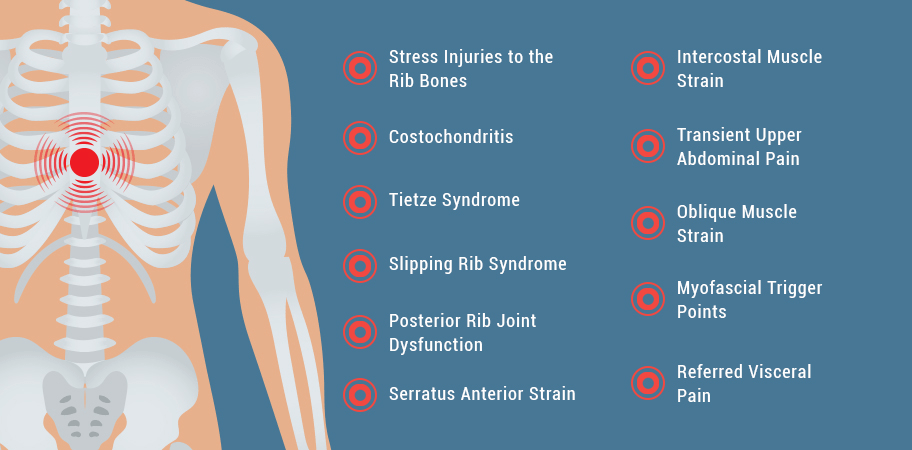 Costochondritis may improve on its own after a few weeks, although it can last for several months or more.
Costochondritis may improve on its own after a few weeks, although it can last for several months or more.
Signs and symptoms
Cartilage is tough but flexible connective tissue. It is found throughout the body, including in the joints between bones. It acts as a shock absorber, cushioning the joints.
The area, at the end of each rib, is known as the costochondral junction. When the costochondral junction becomes inflamed it can result in sharp chest pain and tenderness. This may develop gradually or start suddenly.
The pain may be made worse by:
- a particular posture – such as lying down
- pressure on your chest – such as wearing a seatbelt or hugging someone
- deep breathing, coughing and sneezing
- physical activity
When to seek medical help
It can be difficult to tell the difference between the chest pain associated with costochondritis and pain caused by more serious conditions, such as a heart attack.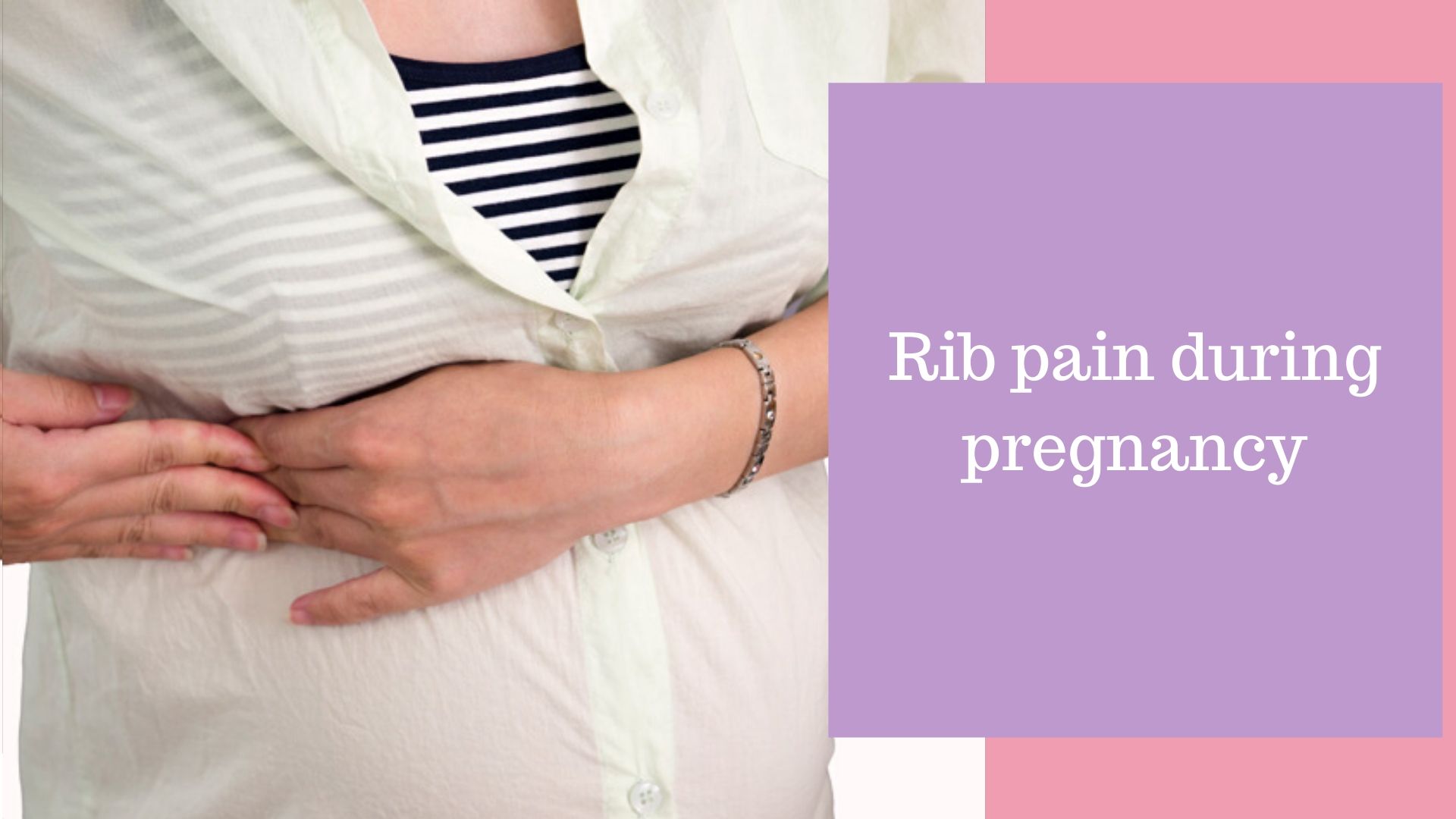
A heart attack usually causes more constant widespread pain and additional symptoms, such as breathlessness, nausea and sweating.
If you, or someone you’re with, experiences sudden chest pain and you think there’s a possibility it could be a heart attack, dial 999 immediately and ask for an ambulance.
If you’ve had chest pain for a while, don’t ignore it. Make an appointment to see your GP so they can investigate the cause.
Causes of costochondritis
Inflammation is the body’s natural response to infection, irritation or injury.
It’s not known exactly why the costochondral junction becomes inflamed. In some cases it’s been linked to:
- severe coughing – which strains your chest area
- an injury to your chest
- physical strain from repeated exercise or sudden exertion that you’re not used to – such as moving furniture
- an infection – including respiratory tract infections (RTIs) and wound infections
- wear and tear – your chest moves in and out 20 to 30 times a minute, and over time this motion can lead to discomfort in these joints
Treating costochondritis
Costochondritis often gets better after a few weeks.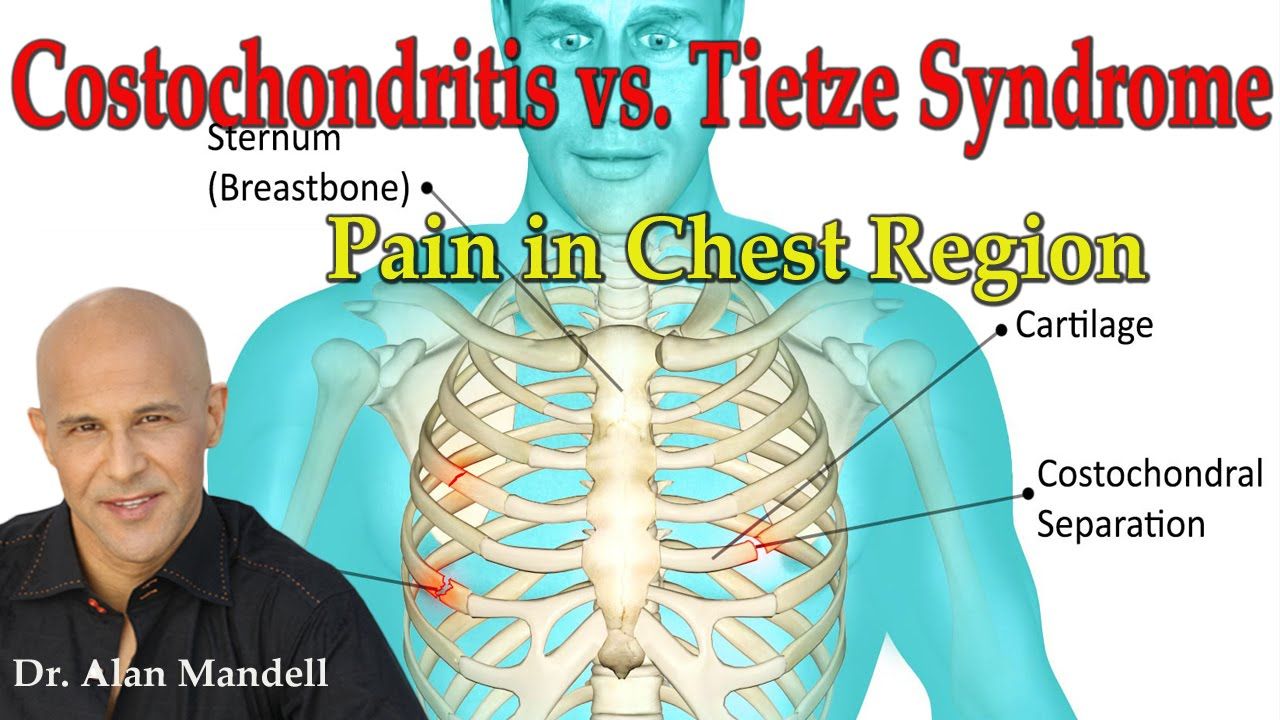 Self-help measures and medication can help manage the symptoms.
Self-help measures and medication can help manage the symptoms.
Self-help
Costochondritis can be aggravated by any activity that places stress on your chest area. This can include strenuous exercise or even simple movements like reaching up to a high cupboard.
Any activity that makes the pain in your chest area worse should be avoided until the inflammation in your ribs and cartilage has improved.
You may also find it soothing to regularly apply heat to the painful area. For example, using a cloth or flannel that’s been warmed with hot water.
You should make sure the flannel is not too warm to avoid a scald or burn.
Painkillers
Painkillers, such as paracetamol, can be used to ease mild to moderate pain.
Taking a type of medication called a non-steroidal anti-inflammatory drug (NSAID) – such as ibuprofen –can also help control the pain and swelling.
These medications are available from pharmacies without a prescription. You should make sure you carefully read the instructions that come with them before use. Ask your pharmacist if you need advice.
Ask your pharmacist if you need advice.
Contact your GP if your symptoms get worse despite resting and taking painkillers, to discuss alternative treatment.
Tietze’s syndrome
Costochondritis may be confused with a separate condition called Tietze’s syndrome. Both conditions involve inflammation of the costochondral joint and can cause very similar symptoms.
Tietze’s syndrome is much less common and often causes chest swelling. This may last after any pain and tenderness has gone.
Costochondritis also tends to affect adults aged 40 or over. Tietze’s syndrome usually affects young adults under 40.
As the conditions are very similar, most of the information above also applies to Tietze’s syndrome.
- find out more about costochondritis on the NHS website
More useful links
- How to use your health services
Help improve this page – send your feedback
Chest pain – causes, diagnosis and treatment
Chest pain (thoracalgia) is pain in the chest of varying nature and intensity.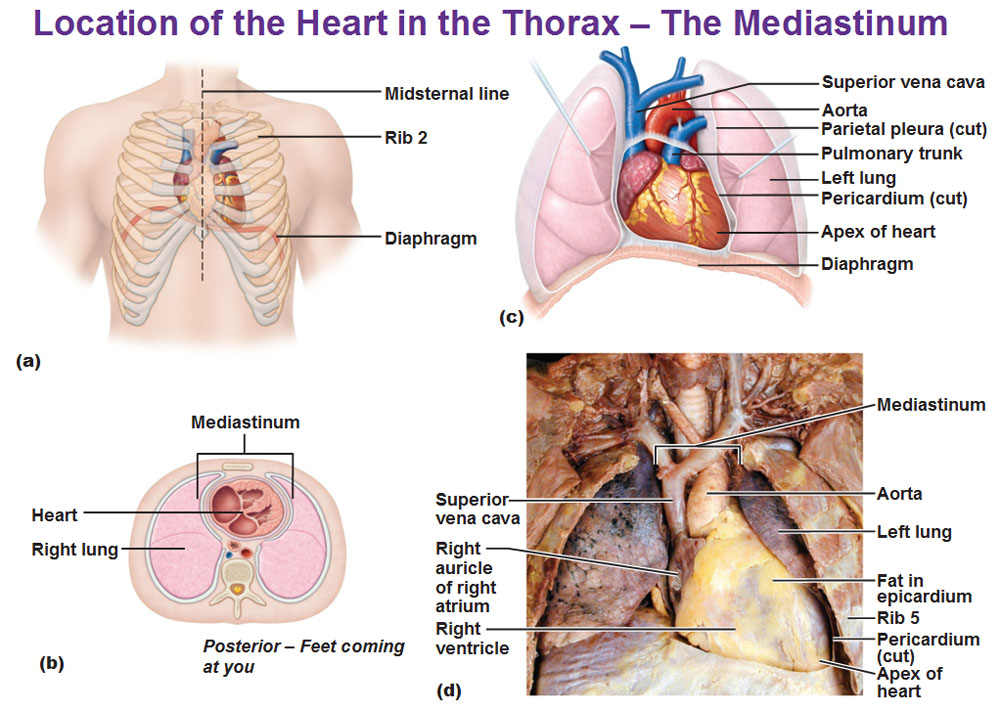 Soreness often radiates to the arm, shoulder blade, collarbone. The symptom occurs during pathological processes in the lungs, mediastinal organs, with damage to the heart, neuromuscular apparatus. Sometimes the chest hurts with diseases of the abdominal organs. To establish the cause of thoracalgia, ultrasound and X-ray of the chest organs, EGDS are performed, the abdominal cavity is examined, and laboratory tests are prescribed. To relieve pain, analgesics, NSAIDs, physiotherapy methods are used.
Soreness often radiates to the arm, shoulder blade, collarbone. The symptom occurs during pathological processes in the lungs, mediastinal organs, with damage to the heart, neuromuscular apparatus. Sometimes the chest hurts with diseases of the abdominal organs. To establish the cause of thoracalgia, ultrasound and X-ray of the chest organs, EGDS are performed, the abdominal cavity is examined, and laboratory tests are prescribed. To relieve pain, analgesics, NSAIDs, physiotherapy methods are used.
General characteristics
Discomfort and pain in the chest occur in various pathologies of the musculoskeletal system, internal organs and skin, so pain is very variable. By nature, the pain is dull, pressing, stabbing, squeezing. Some patients describe their sensations as an intense burning sensation in the sternum. The duration of the pain syndrome ranges from several minutes to several weeks, while the pain remains constant or increases over time. Often there is irradiation in the arm, collarbone, shoulder blade.
Unpleasant symptoms are aggravated by sudden body movements, deep breaths, physical activity. In case of damage to the nerve trunks, the chest hurts more on palpation, accidental touches, the pain subsides when lying still. For inflammatory processes of the pleura, a decrease in discomfort in the position on the sore side is characteristic. Constant pain of moderate intensity and sudden severe pain attacks are an indication for seeking medical help.
Causes of pain in the chest
Causes of pain in the chest on the left
In the left half of the chest cavity there is a heart with great vessels, so the pain syndrome is often caused by cardiac pathology. Sensations range from mild discomfort that develops with physical activity to severe chest pain, forcing the patient to remain still. The most common causes of left chest pain are:
- Coronary syndrome: stable and unstable angina pectoris, myocardial infarction.

- Inflammatory diseases of the heart : infective endocarditis, rheumatism, myocarditis.
- Disorders of the conduction system of the heart : arrhythmias, extrasystole, paroxysmal tachycardia.
- Increased blood pressure .
- Cardiac manifestations of collagenosis : systemic lupus erythematosus, dermatomyositis, vasculitis.
- Dissecting aortic aneurysm .
- Diseases of the respiratory system : left-sided croupous or focal pneumonia, left-sided pleurisy, tuberculosis.
- Diaphragmatic hernia .
- Abdominal disorders : splenomegaly, acute and chronic pancreatitis, spleen injury.
- Rare causes : tumors (lung, bronchi, pleura), peptic ulcer.
Causes of chest pain on the right
The symptom is most often associated with damage to the respiratory system. The pain syndrome is constant, intense, sometimes patients have to take a forced position on their side. The chest begins to hurt more with deep breaths, sharp turns of the body, coughing fits. Common causes of chest pain on the right:
The pain syndrome is constant, intense, sometimes patients have to take a forced position on their side. The chest begins to hurt more with deep breaths, sharp turns of the body, coughing fits. Common causes of chest pain on the right:
- Infectious processes : right-sided bacterial or viral pneumonia, purulent bronchitis.
- Pleurisy : dry, exudative.
- Injuries : chest contusions, hemothorax and pneumothorax, lung contusion.
- Pathologies of the biliary system : cholecystitis, biliary dyskinesia, cholelithiasis.
- Liver damage : viral hepatitis, neoplasms, echinococcal cysts.
Causes of chest pain
When the chest hurts in the middle, and discomfort radiates up the esophagus, this often indicates a pathology of the upper digestive system, but may be a sign of other diseases. Patients note an increase in symptoms with torso tilts, sudden movements. The main causes of chest pain:
The main causes of chest pain:
- Gastroesophageal reflux .
- Thoracic esophageal disease : esophagitis, esophageal sphincter dyskinesia, esophagus spasm.
- Pathology of the stomach : hyperacid gastritis, peptic ulcer.
- Respiratory system dysfunctions : tracheitis, bronchitis, bronchial asthma.
- Diseases of the heart : endocarditis, myocarditis, pericarditis.
- Mediastinal masses : thymus pathology (hyperplasia, cyst, thymoma), lymphoproliferative syndromes (lymphogranulomatosis, non-Hodgkin’s lymphomas), granulomatous processes (sarcoidosis, tuberculosis, silicosis).
- Complications of pharmacotherapy : long-term use of NSAIDs, corticosteroids, absorbable antacids.
- Rare causes : Zollinger-Ellison syndrome, osteochondrosis, intercostal neuralgia.
Causes of breast pain
There are two types of breast pain: cyclic, associated with the menstrual cycle, and non-cyclic, indicating the development of the disease.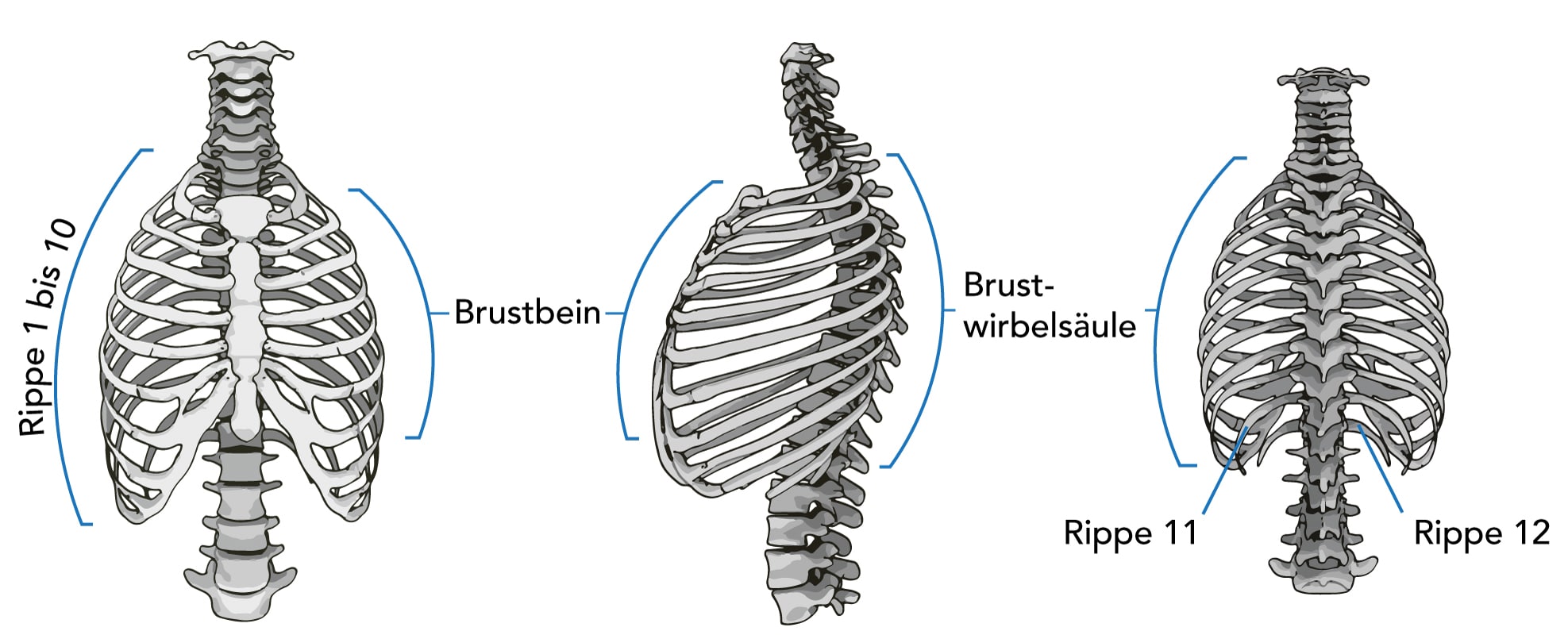 Pain syndrome during hormonal changes occurs symmetrically on both sides, and local pathological processes usually cause unilateral discomfort. There are such causes of pain in the mammary glands as:
Pain syndrome during hormonal changes occurs symmetrically on both sides, and local pathological processes usually cause unilateral discomfort. There are such causes of pain in the mammary glands as:
- External factors : improperly selected bra, tight clothing in the chest.
- Physiological conditions : a few days before the onset of menstrual bleeding, during pregnancy and lactation.
- Inflammation of the mammary gland : lactational mastitis, purulent mastitis, breast abscess.
- Fibrocystic mastopathy : nodular and diffuse forms.
- Nipple affection : inflammation, eczema, Paget’s cancer.
- Benign tumors : fibrolipoma, intraductal papilloma, adenoma.
- Malignant neoplasms : intraductal carcinoma, tubular carcinoma, papillary carcinoma.
- Complications of pharmacotherapy : pain after taking oral contraceptives, antipsychotics and antidepressants.

Causes of pain in the ribs
In such cases, pain in the chest occurs on one or both sides, pain is often sharp, shooting. Soreness is aggravated by the slightest movement, careless touch, wearing tight clothing. Some patients find it difficult to breathe. The most common causes of rib pain are:
- Intercostal neuralgia .
- Herpes zoster .
- Injuries : severe chest contusions, broken ribs.
- Costal chondritis (Tietze’s syndrome).
- Diseases of the vertebrae : osteochondrosis, intervertebral hernia, kyphoscoliosis.
- Muscle disorders : fibromyalgia, muscle strain, physical strain.
- Osteosarcoma of the ribs .
Diagnosis
An internist or family doctor is in charge of finding out the cause of chest pain. To verify the diagnosis, the musculoskeletal system and internal organs are examined.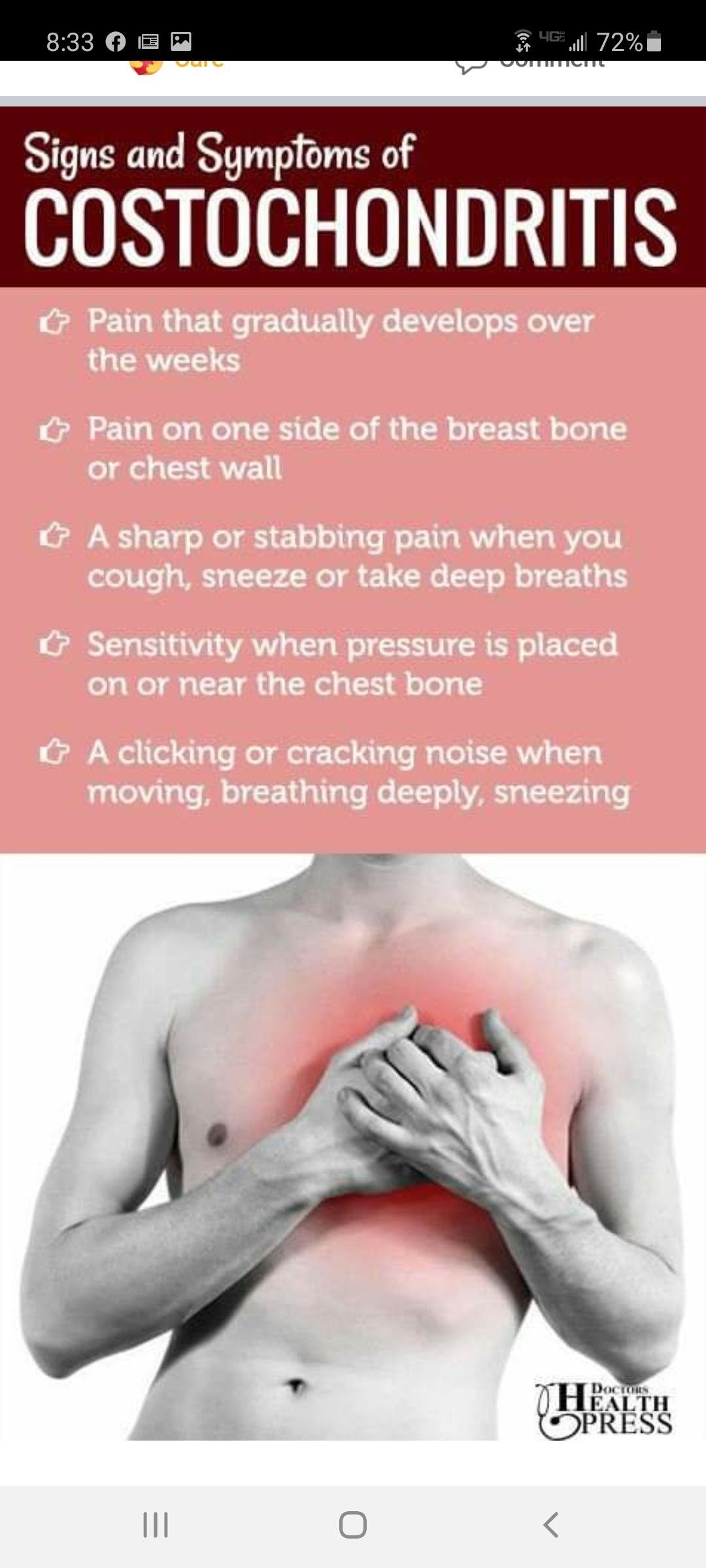 The main methods are instrumental methods of visualization of anatomical structures; to clarify the cause of thoracalgia, laboratory diagnostics are performed. The most informative methods:
The main methods are instrumental methods of visualization of anatomical structures; to clarify the cause of thoracalgia, laboratory diagnostics are performed. The most informative methods:
- Electrocardiography. To rule out or confirm a cardiac etiology for left chest pain, an ECG is recorded in standard leads. Expansion and deformation of the complexes, elevation of the ST interval indicate myocardial ischemia. For the diagnosis of arrhythmias, Holter monitoring is performed.
- Ultrasound examinations . Echocardiography (EchoCG) is necessary if the chest hurts on the left side. Evaluate the contractile function of the heart muscle, ejection fraction, signs of destructive lesions of the valvular apparatus. Abdominal ultrasound is used to detect diseases of the spleen, pancreas, or gallbladder that cause thoracalgia.
- Radiography . On chest radiographs, one can detect focal processes in the lung tissue, volumetric formations of the lungs and mediastinum, which are usually the etiological factor of chest pain.
 Women are scheduled for mammograms. Plain radiography of the gastrointestinal tract is recommended for the detection of diaphragmatic hernia, ulcerative defects.
Women are scheduled for mammograms. Plain radiography of the gastrointestinal tract is recommended for the detection of diaphragmatic hernia, ulcerative defects. - Endoscopic methods . EGD is performed to diagnose damage to the esophagus that provokes chest pain. During the study, the state of the mucous membrane, the contractility of the cardiac sphincter are studied. In case of severe damage to the respiratory system, bronchoscopy is indicated to examine the mucosa and take material for bakposev.
General and biochemical blood tests reveal signs of inflammatory processes, pathologies of the liver and biliary system. Bacteriological culture of sputum and bronchial washings is necessary to determine the type of pathogen. In women, the concentration of sex hormones is determined. If unbearable pain in the chest is felt and cancer is suspected, a biopsy of a suspicious formation is performed for cytological analysis.
Treatment
Help before diagnosis
In case of minor discomfort, rest for a few days, avoid physical exertion and overwork is enough.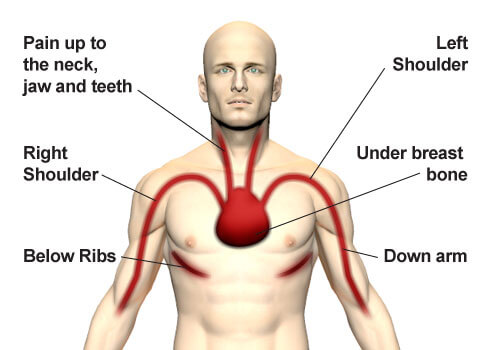 For pain in the mammary glands before menstruation, patients are advised to wear soft, comfortable bras and take NSAIDs. With an intense pain syndrome or the addition of other pathological symptoms, it is necessary to consult a doctor who will find out why the chest hurts. If the pain is accompanied by loss of consciousness, cyanosis of the skin and cold sweat, the person needs emergency medical care.
For pain in the mammary glands before menstruation, patients are advised to wear soft, comfortable bras and take NSAIDs. With an intense pain syndrome or the addition of other pathological symptoms, it is necessary to consult a doctor who will find out why the chest hurts. If the pain is accompanied by loss of consciousness, cyanosis of the skin and cold sweat, the person needs emergency medical care.
Auscultation for pain in the chest
Conservative therapy
Medical tactics depend on the cause of thoracalgia, in case of diseases of the internal organs, etiotropic treatment is carried out, in case of unbearable pain it is supplemented with analgesics. The chest hurts less after the use of warm compresses, electrophoresis with anti-inflammatory and analgesic drugs. To eliminate the cause that caused the pain syndrome, medicines of the following groups are used:
- Non-steroidal anti-inflammatory drugs . NSAIDs are the drugs of choice for rheumatic processes, they can stop the symptoms and maintain a stable remission.
 In bronchitis and pneumonia, they reduce the production of inflammatory mediators and relieve pain.
In bronchitis and pneumonia, they reduce the production of inflammatory mediators and relieve pain. - Antianginal drugs . If it hurts in the pericardial region of the chest, the drugs improve the blood supply to the myocardium, increase the delivery of oxygen to the cell. Means also normalize heart rhythm, reduce the risk of heart attack. Apply calcium channel blockers, beta-blockers.
- Antibiotics . Etiotropic drugs are indicated for pneumonia, purulent bronchitis and pleurisy. They are selected empirically, in the future, the appointments are adjusted after the results of bakposev. Antibiotics reduce the activity of the inflammatory process, due to which the pain in the chest subsides.
- Antacids . Means lower the acidity of gastric juice, therefore, are effective in gastroduodenal reflux and hyperacid conditions. When taking antacids, the irritating effect of hydrochloric acid on the mucosa of the esophagus decreases, and pain is eliminated.

- Hormonal preparations . Estrogen drugs are used to treat severe pain in both breasts during the premenstrual period. Hormones of the adrenal cortex are recommended in case of severe rheumatic diseases, in which the chest and heart hurt.
- Cytostatics . The drugs are used for various oncological pathologies. Their action is aimed at destroying cancer cells and slowing down the growth of tumor tissue. Combinations of 2-3 drugs are most effective, the duration of administration depends on the stage and degree of response to chemotherapy.
Surgical treatment
Pain in the chest area associated with complicated fractures of the ribs or spine requires surgical intervention – open reposition of fragments with fixation by bone osteosynthesis. With purulent mastitis, opening and drainage, washing the wound with antiseptics are shown. Oncological causes of pain syndrome serve as the basis for radical operations. To prevent recurrences, the affected organ, adjacent tissue and regional lymph nodes are removed.
To prevent recurrences, the affected organ, adjacent tissue and regional lymph nodes are removed.
MC “Krajina Zdorov’ya” – Cause of pain in the chest: neuralgia or heart?
For the time being, the prospect of heart disease seems distant and hazy to most of us. But sooner or later, almost everyone is faced with an extremely unpleasant sensation – sudden chest pain. It is unlikely that it will be possible to console oneself with the thought that the hour has not yet come for a heart attack: if a person is impressionable, he, as a rule, will experience a feeling of panic. Meanwhile, it is easy to confuse pains of a neuralgic nature with heart pains.
How to tell one type of pain from another, why neuralgia and chest pain occur, and how to keep yourself healthy.
Symptoms of chest pain: similarities and differences
People who do not like to go to doctors (especially men) often prefer to endure an attack, stopping it with pain medication. But the price of a mistake in the matter of chest pain is prohibitive: if you do not seek help for a heart attack in time, the outcome can be fatal
But the price of a mistake in the matter of chest pain is prohibitive: if you do not seek help for a heart attack in time, the outcome can be fatal
On the other hand, many people first of all sin on the heart – after all, it is located in the chest, and intercostal neuralgia, in theory, should be felt from the side, between the ribs? In fact, the localization of pain sensations can be different, in addition, the pain is sometimes given to both the arm and the back.
The main difference between a heart attack and neuralgia is the duration. Attacks of intercostal neuralgia are quite long, up to several days. Heart pains are short – for example, an angina attack lasts 5-10 minutes.
Neuralgic pains are acute, and angina is dull, burning, with shortness of breath. In the old days, angina pectoris was called “angina pectoris” precisely because of the sensation that a heavy and cold toad sits on the chest. Pain with angina pectoris spreads to the entire area of the chest, it is difficult for a person to indicate exactly where he has pain. With neuralgia, it is usually possible to accurately localize the main place of pain.
With neuralgia, it is usually possible to accurately localize the main place of pain.
Another symptom very characteristic of neuralgia is a decrease or increase in the intensity of pain depending on the position of the body, inhalation-exhalation. Heart pain does not depend on the position of the body, with one exception – with myocardial infarction during movement, it intensifies.
A nitroglycerin tablet may stop a heart attack but will not stop a heart attack. Therefore, if the pain after taking nitroglycerin continues, you should immediately call an ambulance.
Why does chest pain occur?
A logical question: if everything was in relative order with health, why do attacks with high intensity immediately occur? In fact, rarely is anyone regularly examined by a cardiologist. Most cases of angina pectoris are so-called exertional angina, which occur after physical or emotional stress. If the attack occurred after sleep, this is rest angina.
Actually, angina pectoris is a violation of blood supply in the human heart muscle. Such constant oxygen starvation leads to the development of coronary heart disease and a heart attack. The main risk factors here are:
– arterial hypertension;
– violation of fat metabolism and atherosclerosis;
– violation of carbohydrate metabolism and increased blood sugar levels;
– congenital or acquired heart disease.
Intercostal neuralgia is pain passing through the trunk and branches of any of the intercostal nerves (there are 11 pairs, and the 12th pair is the hypochondrium nerves). It occurs due to compression, irritation or inflammation of the nerve. There are a lot of reasons for the appearance of neuralgia – and problems with the spine (osteochondrosis, displacement and hernia of the intervertebral discs), and infections (including influenza), and sciatica, neuritis, and injuries, hypothermia, and excessive muscle tone …
Which doctors should I contact for help?
If you’re in an emergency, doctors can help guide you by ruling out or confirming a heart problem. If you have had an attack of angina pectoris, then you cannot do without an examination by a cardiologist. However, even if the attack turned out to be neuralgia, it is worth visiting a cardiologist.
If you have had an attack of angina pectoris, then you cannot do without an examination by a cardiologist. However, even if the attack turned out to be neuralgia, it is worth visiting a cardiologist.
With neuralgia, the situation is somewhat more complicated – first of all, you need to visit a neurologist, make an x-ray or undergo a tomography. Once the cause has been clarified, the doctor will be able to give further recommendations for treatment or refer you for a consultation with another specialist, such as an osteopath.
Chest pain: what to do
First, minimize any physical activity and sit or lie down. Often it is not possible to lie flat – in this case, you should take a semi-lying position, putting pillows under your back. It is necessary to ensure the flow of fresh air into the room, unbutton the collar of the clothes. If the cause of the pain is not clear, you should immediately take 1-2 tablets of nitroglycerin. (Remember that nitroglycerin can dramatically lower the pressure.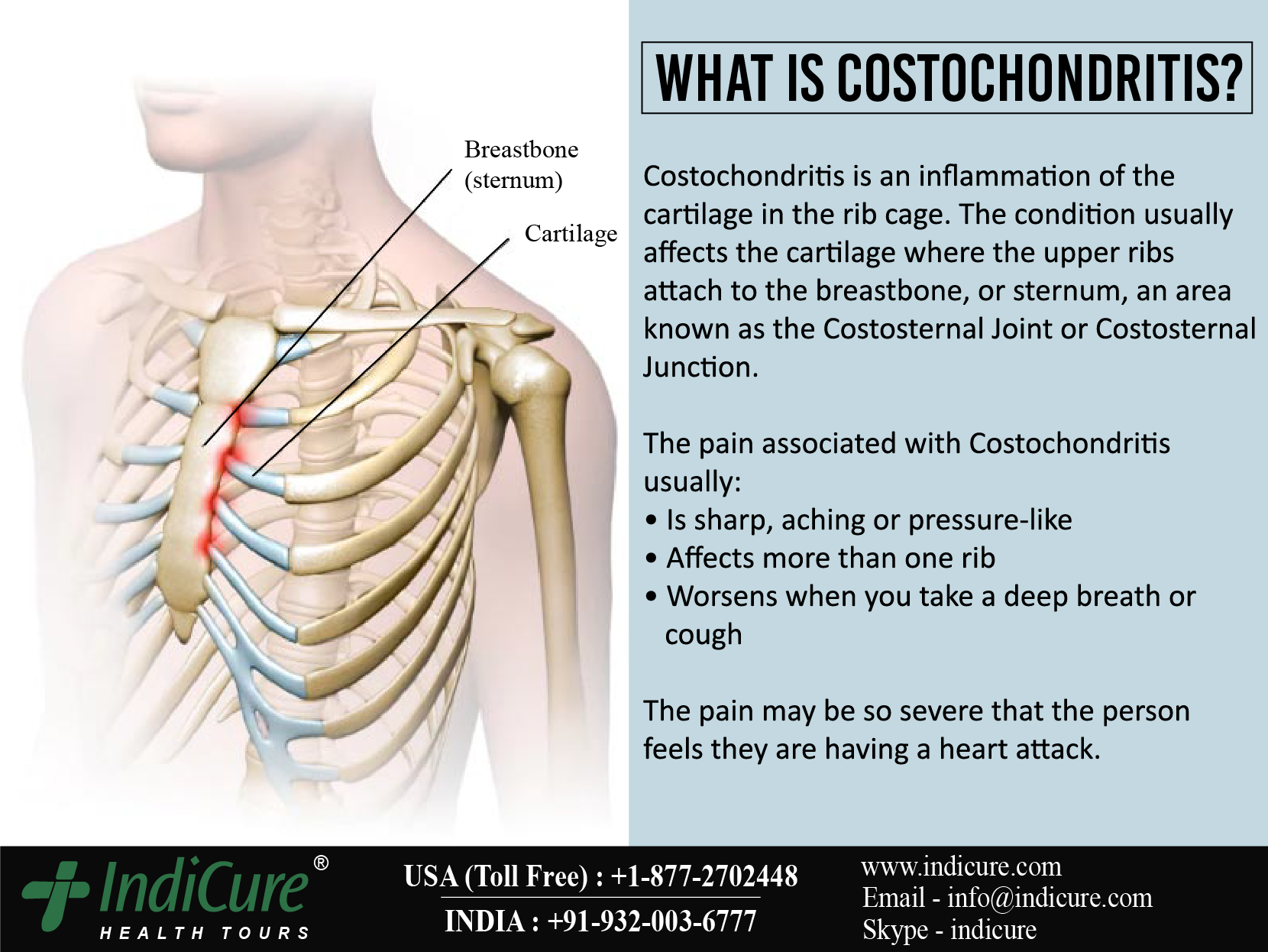

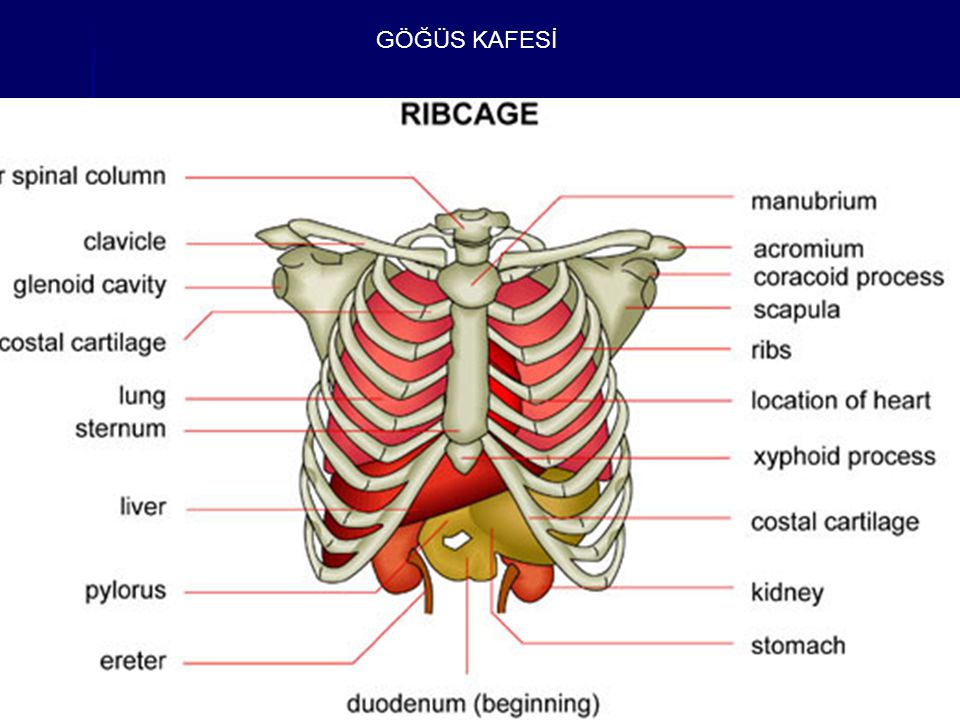 Gentle stretching exercises for the chest muscles might be helpful.
Gentle stretching exercises for the chest muscles might be helpful. They may contain nonsteroidal anti-inflammatory drugs or numbing medications. Some varieties contain capsaicin, the substance that makes hot peppers spicy.
They may contain nonsteroidal anti-inflammatory drugs or numbing medications. Some varieties contain capsaicin, the substance that makes hot peppers spicy. How can I best manage them together?
How can I best manage them together?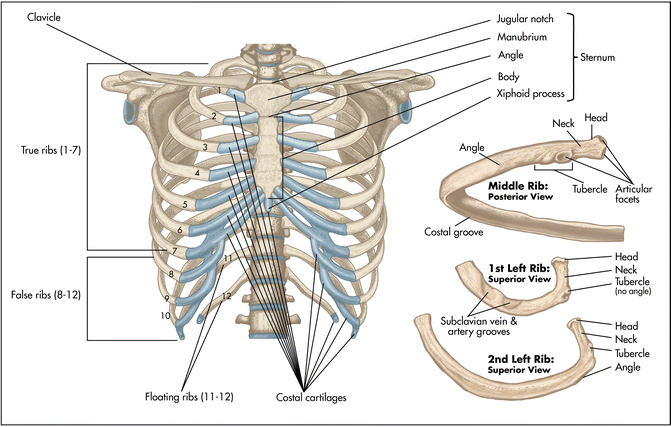

 Women are scheduled for mammograms. Plain radiography of the gastrointestinal tract is recommended for the detection of diaphragmatic hernia, ulcerative defects.
Women are scheduled for mammograms. Plain radiography of the gastrointestinal tract is recommended for the detection of diaphragmatic hernia, ulcerative defects. In bronchitis and pneumonia, they reduce the production of inflammatory mediators and relieve pain.
In bronchitis and pneumonia, they reduce the production of inflammatory mediators and relieve pain.